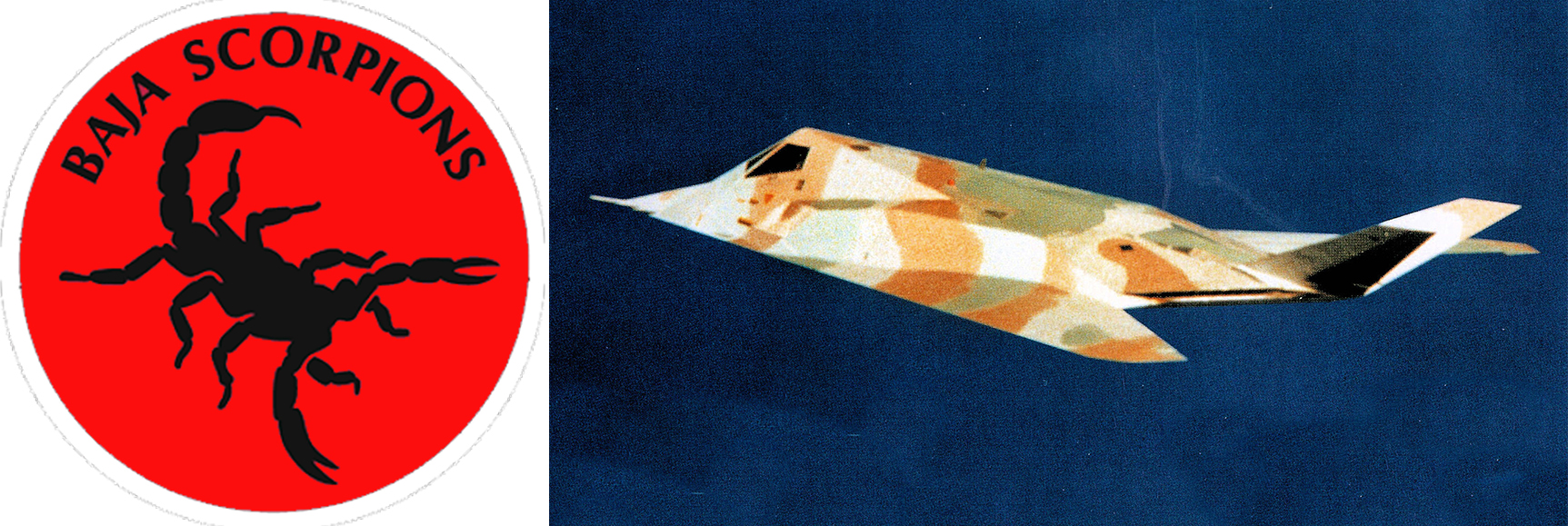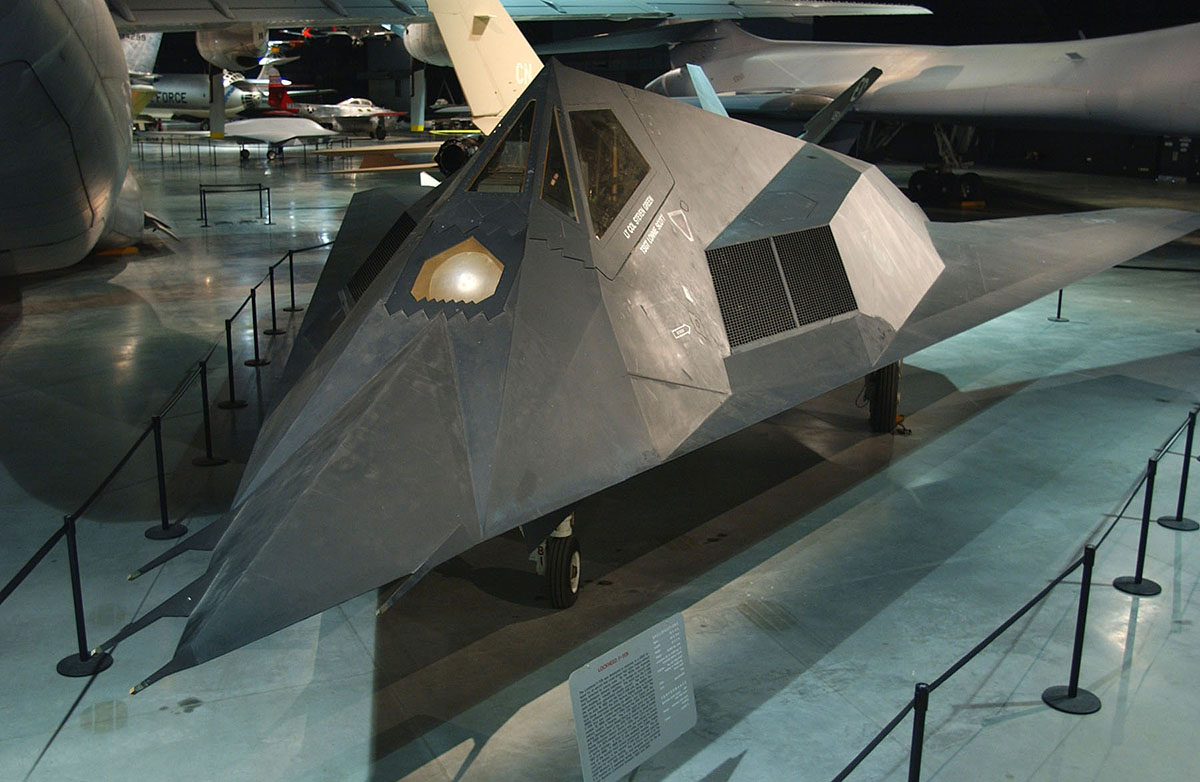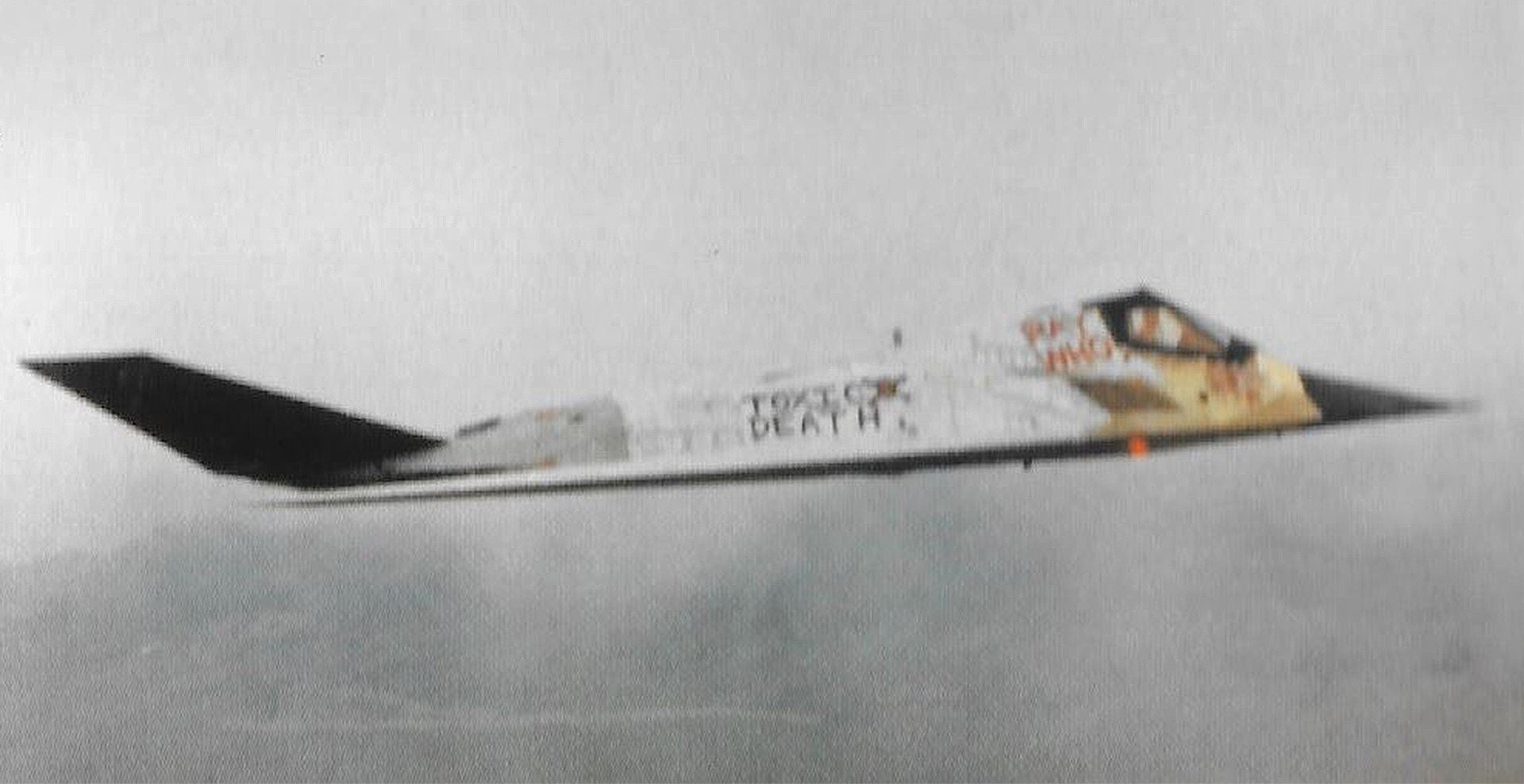If a band of pirates were to have stolen an F-117 Nighthawk in an alternate dystopian reality, it probably would have looked exactly like YF-117A #781 does above. It’s not every day you see one of America’s most sensitive and exotic combat aircraft stripped of its paint and stealth coatings and rattle-canned with graffiti, but that’s exactly what happen on June 27th, 1991.
Just a couple of years after the F-117 was declassified, and just months after its incredible performance during Operation Desert Storm, YF-117 #781 “Scorpion 2” was selected to be retired to the National Museum of the United States Air Force, located at Wright Patterson AFB. At the time, #781 was just ten years old, and had racked up just 437 test flights, but it was a pre-production test aircraft—the second of its kind—and could not be reintroduced into the operational F-117 fleet.
Transferring #781 to a museum was a pretty big deal, as no F-117 had ever been put on public display—not to mention the fact that the aircraft was packed with classified systems and coated with some of America’s most sensitive material. Simply flying it to the museum and pulling out some avionics was not in the cards; the “Black Jet” had to be totally stripped and modified inside and out before being rolled out to the public.
To remove any trace of the highly classified radar-absorbent material that coated the F-117’s faceted surfaces, the aircraft was “media-blasted.” This is a process similar to sand-blasting, but utilizes sodium bicarbonate crystals instead of sand so that the jet’s bare skin, which is an amalgam of composite and metallic materials, would not be harmed in the process.
While media blasting was safe for the jet, it was abhorrent for the crews that had to do it. Everyone involved had to be covered head to toe in protective gear and masks, any open seam sealed with tape. Apparently, the fine particulates got everywhere and into everything—no crevice was too small. It was a nasty, arduous process—and precisely where the “Toxic Death” moniker and skull and crossbones emblazoned on both sides of #781 came from. Since the aircraft was going to be repainted before being put on display anyway, the crews had some fun with their blank canvas.
The “Ray Who?” inscription seen painted in red behind the cockpit apparently refers to the name of gregarious flight test engineer that worked with the Baja Scorpions, the Lockheed-USAF integrated test unit that conducted F-117 developmental flight testing during the jet’s infancy at Area 51.

The freshly stripped #781 made its way to Wright Patterson AFB, and once it arrived was gutted of a ton of other sensitive materials, systems, and reusable parts. Many of the jet’s classified avionics, like its air-data computer, the radar-diffusing grids over its intakes, and low-observable (stealthy) screens over its FLIR and DLIR, had to be dealt with.
Once picked clean, #781 had to be built back up to look like any operational F-117. Certain frequency selective panels, the jet’s exhaust tiles, tail fins, and other sensitive body parts had to be pulled and replaced with lookalikes. Finally, the project was capped off with the application of the Nighthawk’s signature flat-black paint.
It was all a very time-intensive and expensive undertaking.

So that’s the wild tale of the “Toxic Death” F-117, just another facet of the Nighthawk’s wonderfully bizarre history, one that even included a Klingon Cloaking Device and that continues to intrigue to this very day.
Huge thanks to our good friend Chris Webb and the F-117 Nighthawk FB group.
Contact the author: Tyler@thedrive.com
